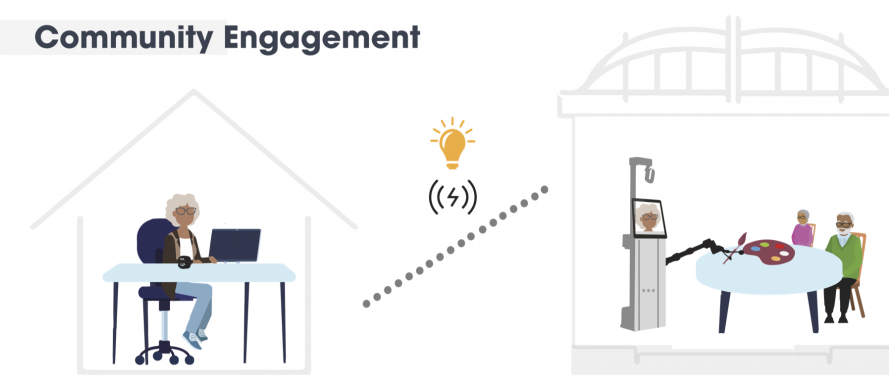Healthcare / Mobile health
Major grant funds new generation of healthcare telemanipulation robots
By Andrew Sansom | 15 Jan 2021 | 0
Researchers at universities in California have been awarded a $1.2 million UC Multicampus Research Programs and Initiatives (MRPI) grant to develop an advanced class of mobile telemanipulation robots.
Called UC Iris and described as easy-to-operate and low-cost robots, they will be used to grasp objects, open doors and perform other tasks to advance telehealth, allowing healthcare workers to conduct remote exams safely and providing quarantined Californians a safe way to interact outside their homes.
“Covid-19 is exacerbating societal inequities and will continue to affect our existence for years to come,” said project lead Laurel Riek, a professor in UC San Diego’s Computer Science and Engineering department and director of the university’s Healthcare Robotics Lab. “Two groups are at extremely high risk for infection, adverse physical and mental health outcomes, and extended isolation: frontline healthcare workers and people who cannot leave their homes due to high infection risk. This project will develop new telehealth robotic technologies to support both groups.”
The team will develop state-of-the-art mobile robots with advanced tactile sensing, manipulation, and haptics technologies, which transmit information through touch. This will allow operators to feel truly immersed in a remote location and give them a sense of presence and touch. Veronica Santos, professor of Mechanical and Aerospace Engineering and director of the Biomechatronics Lab at UCLA, and Veronica Ahumada-Newhart, human-robot interaction scientist at UC Irvine and director of the Technology and Social Connectedness Lab, are co-principal investigators on the team.
For healthcare workers, these new robots will help conduct remote exams. Throughout the pandemic, clinicians have largely relied on static telehealth technologies, such as Zoom and telemedicine carts, to reduce infection risks. However, they must physically deliver these technologies; train patients to use them; and troubleshoot technical issues – all at the patient’s bedside – mitigating their benefits. In addition, existing technologies lack touch and independent mobility, key features that many clinicians need.
Outside of hospitals, millions are at high risk for infection, including people with cancer, those with suppressed immune systems, and older adults. These individuals have been further isolated by the pandemic, putting them at increased risk for depression, suicide, dementia and other conditions. 
To address this, the team will develop inexpensive, user-friendly robotic systems that give quarantined people new opportunities to “leave” home and interact with society.
“We will be designing new haptic interfaces, tactile sensing modalities and shared control methods for telemanipulation,” said Riek. “For healthcare workers, these robots will enable new ways to safely treat patients. For people who are isolated, they will provide new opportunities to engage with their loved ones and their communities.”
The researchers will also study optimal ways to deploy the technology. The team will work closely with healthcare workers across the UC system, including emergency medicine specialists and hospitalists, to integrate UC Iris into critical care settings. They will also explore how these robots can improve quality of life for isolated groups and increase their independence.
“We are specifically focused on Latino communities, as they’re the most tragically affected by Covid-19 in California, representing 71 per cent of fatalities among those 18 to 64,” said Riek. “We will explore ways the robots can help them engage and feel included in their communities without risking in-person gatherings.”
The multidisciplinary research team includes internationally recognised experts in robotics, haptics, health informatics and psychology.
Organisations involved

